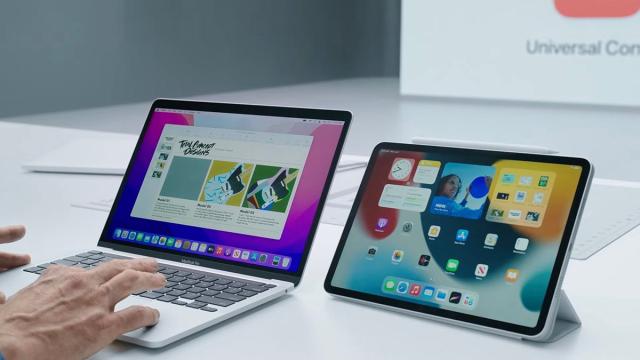Apple now has two ways to get work done with your Mac and iPad: Universal Control, currently appearing in beta versions of iPadOS and macOS, and Sidecar, which was introduced back in 2019. If you’re not sure about what these two features actually offer, how they can be used, or what the difference is between them, we’re here to provide some clarity.
You can be forgiven for getting confused if you’re not super-clear about what makes Universal Control different from Sidecar or vice versa. They both make it easier to use a Mac with an iPad, they both rely on using the same Apple ID on the same wifi network, and they both function pretty much automatically when everything is set up.
The TL;DR version of this is that Sidecar extends your Mac’s display to your iPad, whereas Universal Control lets you use your Mac’s keyboard and mouse (or trackpad) to control both your Mac and your iPad. Sidecar focuses on displays, while Universal Control focuses on input devices.
How to Use Sidecar
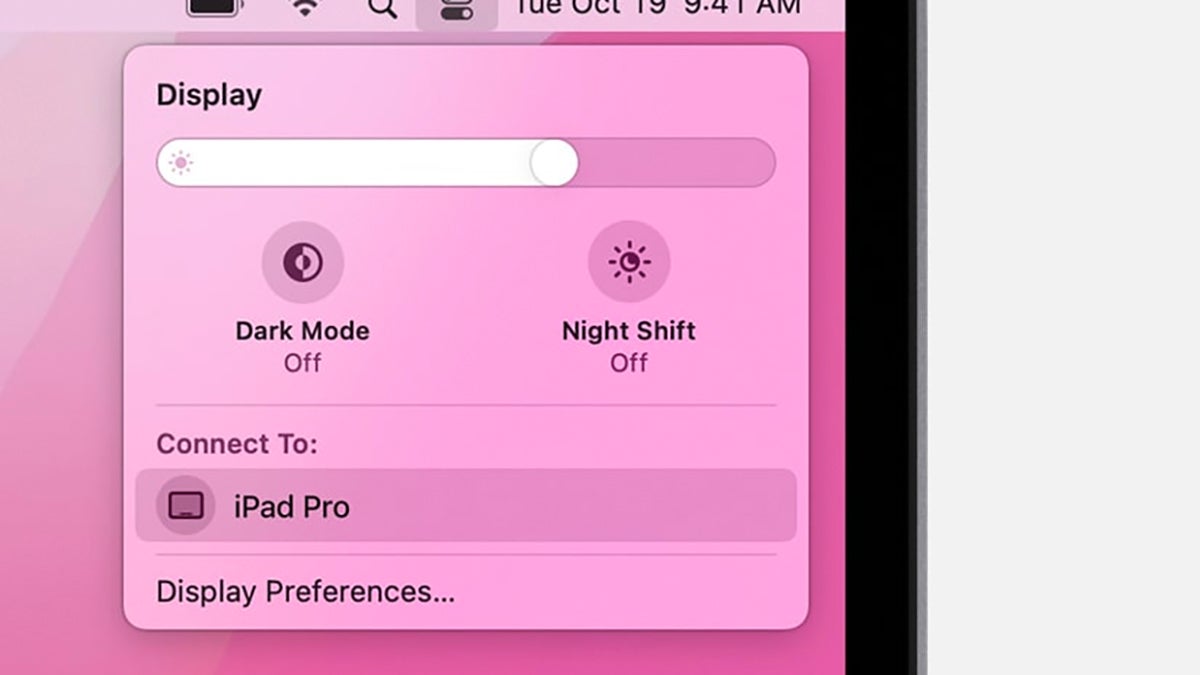
Sidecar lets you use your iPad as a secondary display for your Mac computer, almost as if you plugged an external monitor into it. It’ll work via a USB or Lightning cable, or wirelessly as long as your devices are signed into the same Apple ID and on the same wifi network.
You need a Mac running macOS Catalina or later, and an iPad running iPadOS 13 or later. For Macs, the feature is supported back to the 2016 MacBook Pro, the 2016 MacBook, the 2018 MacBook Air, the 2015 iMac, the 2018 Mac Mini, the 2019 Mac Pro, or the iMac Pro; for iPads, the oldest supported devices are the 2018 iPad, the 2019 iPad Mini, the 2019 iPad Air, or any iPad Pro. All newer Macs and tablets should work.
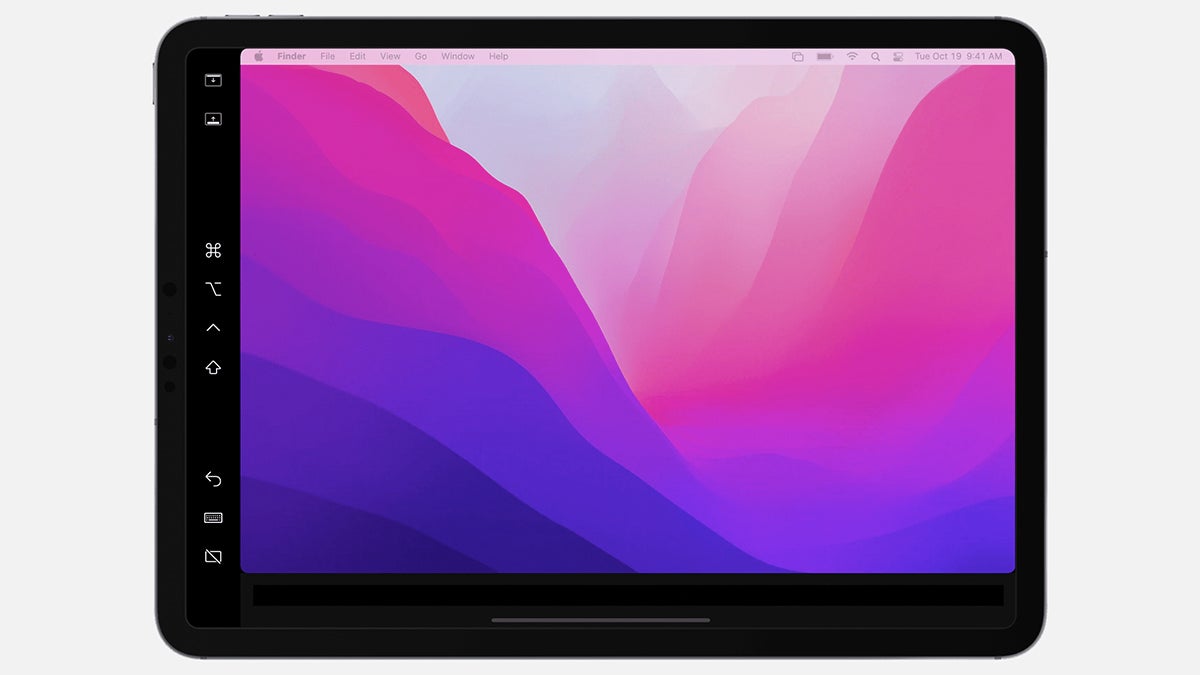
If you’re taking the wireless option, you need wifi and Bluetooth enabled on both devices, and the Handoff syncing feature needs to be enabled as well: It’s under General and AirPlay & Handoff in the iPad Settings, and under General in the Mac System Preferences. Then Sidecar should work seamlessly.
The feature can be activated from the Control Centre icon in the menu bar on macOS. If everything has been set up correctly, the iPad device will show up as a display option. Select it, and the Mac screen extends to the iPad display; if you’d rather mirror the screens instead, this can be configured from Control Centre too. Further options are available via Sidecar in System Preferences on the Mac.
Program windows can be moved over to the iPad by dragging them or by using the move option that appears when the cursor hovers over the green full screen button. The touchscreen functionality on your iPad won’t work with your Mac apps, though if you’ve got an Apple Pencil then this will work as normal — only you’ll be tapping and drawing on macOS rather than iPadOS. What’s more, you can use the Sidecar icon in the iPad dock to jump between iPad apps and the secondary screen functionality.
How Universal Control Works
More recently, Apple introduced Universal Control. Here it’s the keyboard and mouse (or trackpad) that are shared, not the displays. Your iPad keeps on running iPadOS as normal, and your Mac keeps on running macOS, and you can actually use two Macs for Universal Control if you need to, but not two iPads.
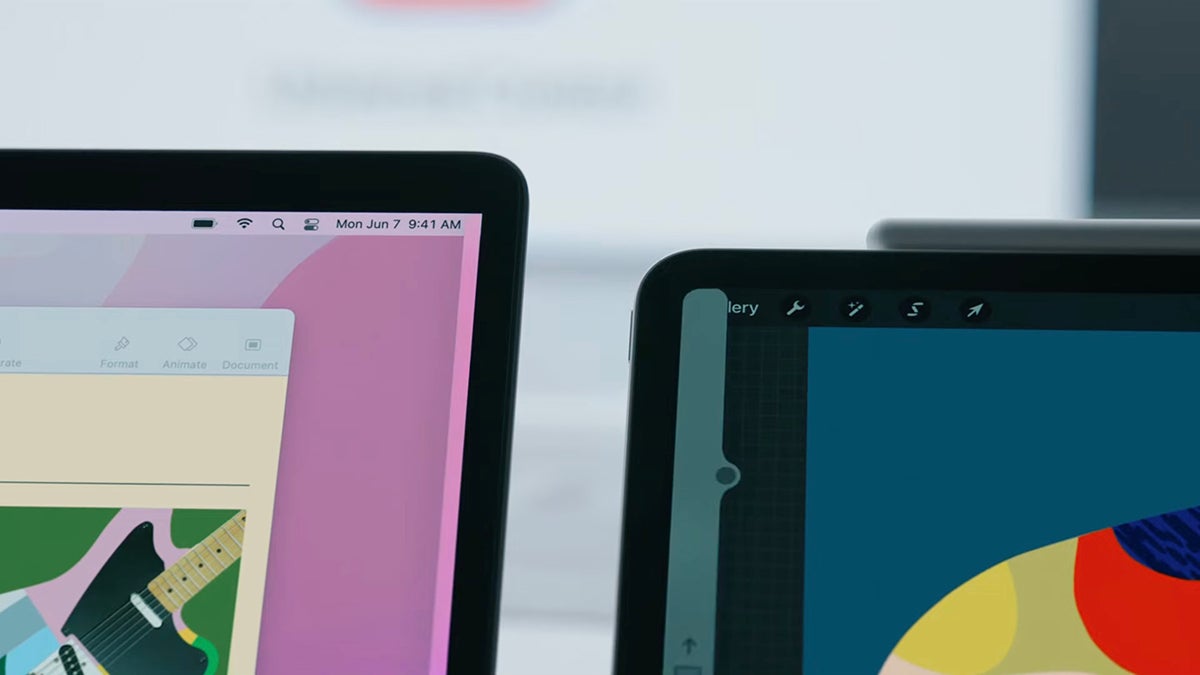
The hardware requirements are actually the same as they are for Sidecar: The same Macs and iPads are supported, you need the latest versions of the software on both (at the time of writing it’s only in the beta editions of iPadOS and macOS), and both devices need to be signed into the same Apple ID and on the same network. Handoff needs to be enabled in the settings for your iPad and your Mac, as with Sidecar.
On your iPad, open Settings and then choose General and AirPlay & Handoff to find the Cursor and Keyboard toggle switch — this needs to be on as well as Handoff. With all the setup done, you should be able to move the cursor to the edge of your Mac screen, and after a short delay it will appear over on your iPad. You can then control your tablet using the mouse (or trackpad) and keyboard attached to your Mac.
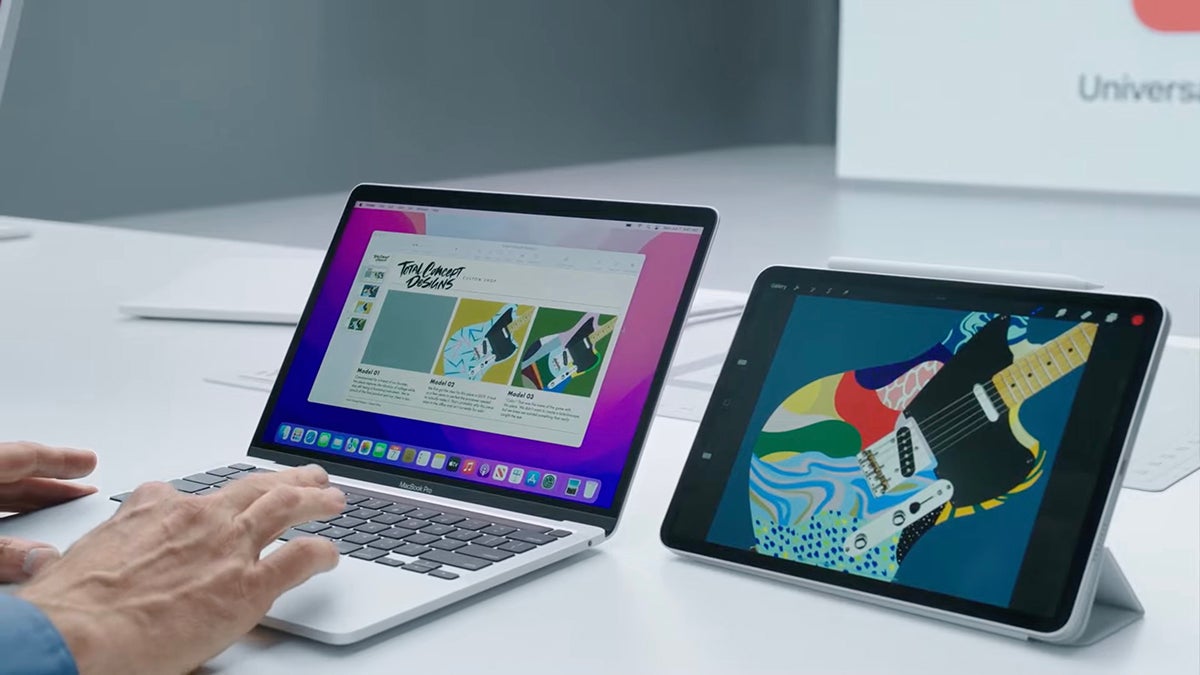
The displays aren’t extended as they are with Sidecar, but the cursor can move between them freely. There are a few extra tricks: You can drag and drop files between certain Mac and iPad apps, for example, and you can add a second Mac to the mix if you’ve got a whole room full of Apple products. The Apple Pencil isn’t supported as a cross-platform input device, and this only works wirelessly without cables.
iPadOS has supported mouse and keyboard control for a while, and Universal Control works best when your iPad is stood up and close by your Mac. It’s like having multiple devices controlled by the same input peripherals — and that obviously helps with certain workflows and productivity in general, if you spend a lot of time switching between tablets and computers.
So there you have it — two technologies that have certain similarities but that are actually quite different. Expect Apple to add more functionality and customisation options in the future as both Sidecar and Universal Control evolve, blurring the lines even further between iPads and Macs.
